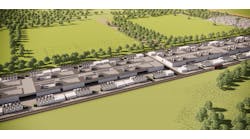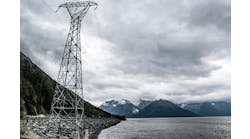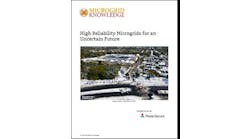A case study on how an innovative utility is leveraging microgrid technology to improve service and reliability.
Oncor operates the largest regulated distribution and transmission system in Texas and the sixth largest in the United States. Today, more than 10 million customers across Texas depend on Oncor for power.
The Challenge: Determined to ensure uninterrupted delivery of power for its millions of customers – even during extreme weather events or other emergencies, Oncor sought a new microgrid solution to diversify its energy generation assets.
“Oncor invested in this microgrid to better understand how microgrids and distributed energy resources can make the grid better. Not only are they looking at the technical aspect of this, but also the economic and regulatory side.” Philip Barton, director of Schneider Electric’s Microgrid and Advanced Reliability program.
Both companies agreed to collaborate to create a new system that would interconnect four microgrids relying on a variety of distributed generation sources. Turning diverse assets into microgrids capable of operating independently or together would require a distribution automation architecture to leverage multiple intelligent grid solutions while enabling them to operate independently or as one microgrid.And that would involve integrating and managing various sources of distributed energy resources (DERs).
The Solution: Oncor’s innovative system comprises four interconnected microgrids and uses several different distributed generation sources, including solar, natural gas, electric storage (wind power will be added soon). The microgrid can disconnect from – and reconnect to – the main utility grid. The Oncor microgrid simulates the environment that they will experience on their grid.
Schneider Electric enabled reactive and predictive control of the microgrid’s DERs with two best-in-class components: PowerLogic TM Microgrid Controller and StruxureWare™ Demand-Side Operation.The Microgrid Controller provides real-time management of distributed generation resources to ensure the right balance between the energy produced and consumed. The controller also safeguards operations and switches seamlessly from a grid-connected mode to an off-grid mode to ensure a reliable source of power for critical loads.
A combination of S&C’s advanced distributed equipment and Schneider Electric’s Microgrid Controller uses advanced, high-speed communications and distributed grid intelligence to automatically detect faults and switch to alternative distributed power sources.
StruxureWare Demand-Side Operation provides a cloud-based platform for economic dispatch and DER forecasting. This software-as-a-service (SaaS) forecasts and optimizes where to produce, consume and store energy based on external events such weather forecasts, demand-response events and tariff rates. It not only optimizes DER use for end customers, but also creates the link between the microgrid and Oncor.
Schneider Electric engineered a fault-tolerant approach based on S&C’s energy storage devices to store energy from either the utility feed or any of the facility’s generation sources. In addition to providing the voltage signal for the site, this design enables renewable integration, controls the microgrid frequency, and is the first generating source to respond during an unexpected loss of power.
Ultimately designed to deliver reliable service for the long haul, Schneider Electric’s virtual power plant software balances power supply and demand across the entire microgrid. For instance, in the event of a power loss caused by extreme weather, S&C Electric’s advanced distribution automation equipment works with Schneider Electric’s Microgrid Controller to dynamically “island” the system and autonomously switch to alternative distributed power sources as needed. Acting independent of the main grid, the new microgrid system automatically restores power with minimal service interruption.
Oncor’s microgrid dramatically improves power reliability and quality, as well as grid security. To help educate residents, policymakers and businesses, Schneider Electric and S&C Electric teamed to develop and implement a demonstration facility for Oncor. The demonstration facility houses an immersion room where visitors view seven screens displaying the history of the grid and an explanation of its technology. Visitors can also watch as the fully functioning grid reacts to a simulated event such as extreme weather. Switching devices respond to clear the fault, isolate the section where the fault occurred, and restore service from an alternate source. All switching devices, controls, communications and software are real and completely functional.
The Bottom Line: Schneider Electric and S&C Electric collaborated to create a distribution system operation (DSO) model for Oncor’s microgrid in only nine months. Projects such as this typically take a year or more to design and deliver.
Schneider Electric’s software and hardware for the new system enable a seamless transition from individual microgrids to a configuration that leverages multiple microgrids working together as needed. It can connect each microgrid to the smart grid.
The new microgrid improves energy efficiency and power reliability for Oncor customers while maximizing the company’s newly installed generation and energy storage units. It also automates dispatch and pricing signals, determining the optimal time to buy, sell or store power – and then handles it all without human intervention.
With an ability to leverage DER flexibility, the new microgrid is now an asset for Oncor.
To get a free copy of the Oncor Case study visit Schneider Electric’ Microgrid resource library.






